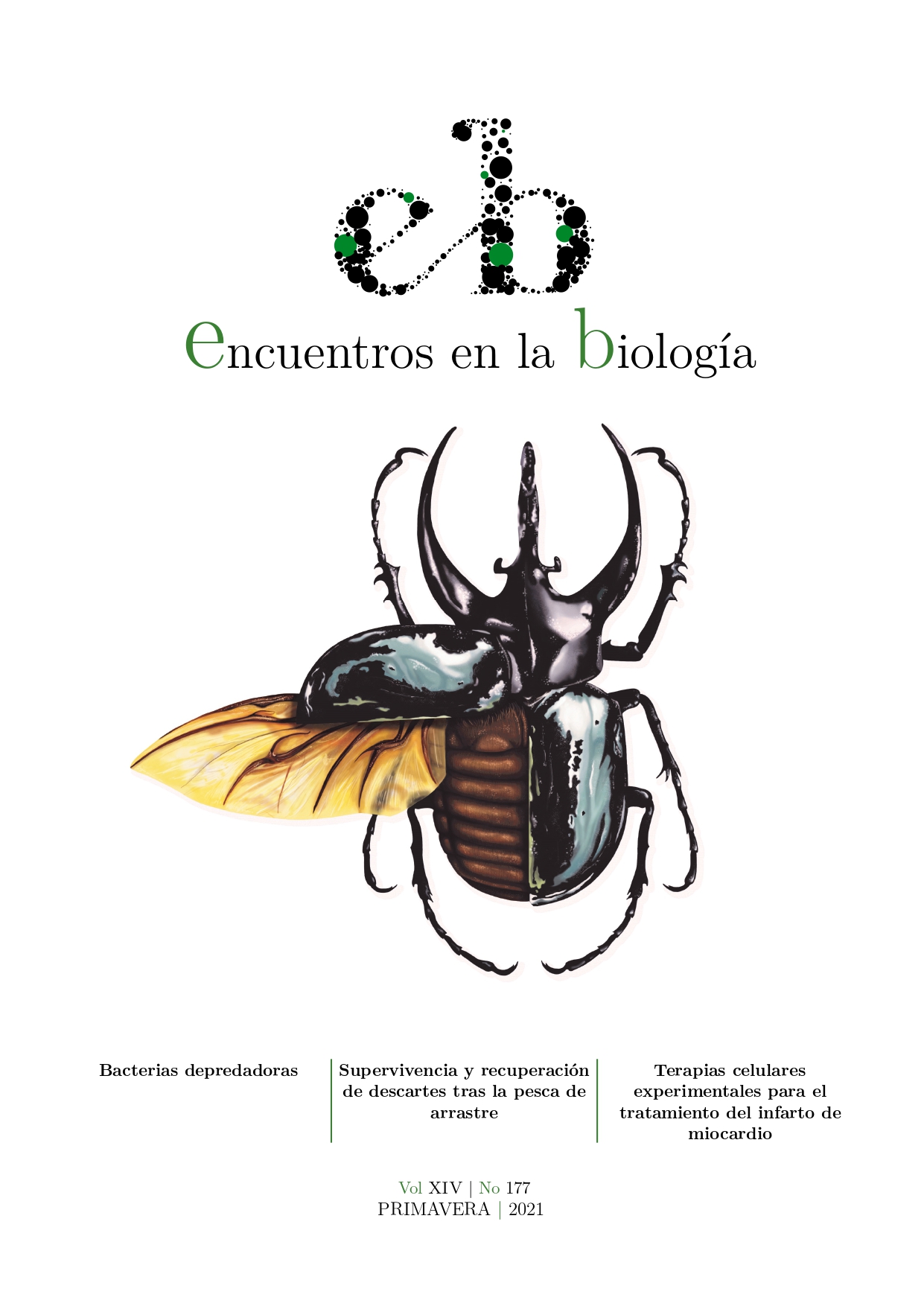Predatory Bacteria
DOI:
https://doi.org/10.24310/enbio.v14i177.16694Keywords:
Bacterial interactions, predation, biocontrolAbstract
The interactions established between bacteria are very broad and diverse, some of them are positive such as mutualism, syntrophism, or protocooperation, others are neutral interactions such as commensalism, and others are negative relationships, including antagonism, competition, parasitism and predation. This article reviews the different strategies that certain bacteria (predators) use to hunt and kill other bacteria (prey), the main characteristics necessary for predation, the defense mechanisms of prey, and the biotechnological applications of this microbial interaction.
Downloads
Metrics
Publication Facts
Reviewer profiles N/A
Author statements
Indexed in
-
—
- Academic society
- N/A
- Publisher
- Uma Editorial. Universidad de Málaga
References
Martin, M.O. Predatory prokaryotes: an emerging research opportunity. J. Mol. Microbiol. Biotechnol. 4: 467-477, 2002.
Pérez, J. et al. Bacterial predation: 75 years and counting!. Environ. Microbiol. 18: 788-779, 2016.
Erken, M. et al. The rise of pathogens: predation as a factor driving the evolution of human pathogens in the environment. Microb. Ecol. 65: 860-868, 2013.
Forterre, P. The common ancestor of archaea and eukarya was not an archaeon. Archae 2013: 372396, 2013.
Lyons, N.A. y R. Kolter. On the evolution of bacterial multicellularity. Curr. Opin. Microbiol. 24: 21-28, 2015.
Keane, R. y J. Berleman. The predatory life cycle of Myxococcus xanthus. Microbiology 162:1-11, 2016.
Downloads
Published
How to Cite
Issue
Section
License
Esta obra está bajo licencia internacional Creative Commons Reconocimiento-NoComercial-CompartirIgual 4.0.
Esta revista provee acceso libre inmediato a su contenido bajo el principio de hacer disponible gratuitamente la investigación al público. Todos los contenidos publicados en Encuentros en la Bilogía están sujetos a la licencia Creative Commons Reconocimento-NoComercia-Compartirigual 4.0 cuyo texto completo puede consultar en <http://creativecommons.org/licenses/by-nc-sa/4.0>
Se pueden copiar, usar, difundir, transmitir y exponer públicamente, siempre que:
Se cite la autoría y la fuente original de su publicación (revista, editorial y URL de la obra).
No se usen para fines comerciales.
Se mencione la existencia y especificaciones de esta licencia de uso
Los derechos de autor son de dos clases: morales y patrimoniales. Los derechos morales son prerrogativas perpetuas, irrenunciables, intransferibles, inalienables, inembargables e imprescriptibles. De acuerdo con la legislación de derechos de autor, Encuentros en la Biología reconoce y respeta el derecho moral de los autores/as, así como la titularidad del derecho patrimonial, el cual será cedido a la Universidad de Málaga para su difusión en acceso abierto. Los derechos patrimoniales, se refieren a los beneficios que se obtienen por el uso o divulgación de las obras. Encuentros en la Biología se publica en open access y queda autorizada en exclusiva para realizar o autorizar por cualquier medio el uso, distribución, divulgación, reproducción, adaptación, traducción o transformación de la obra.
Es responsabilidad de los autores/as obtener los permisos necesarios de las imágenes que están sujetas a derechos de autor.
Los autores/as cuyas contribuciones sean aceptadas para su publicación en esta revista conservarán el derecho no exclusivo de utilizar sus contribuciones con fines académicos, de investigación y educativos, incluyendo el auto-archivo o depósito en repositorios de acceso abierto de cualquier tipo.
La edición electrónica de esta revista esta editada por la Editorial de la Universidad de Málaga (UmaEditorial), siendo necesario citar la procedencia en cualquier reproducción parcial o total.






